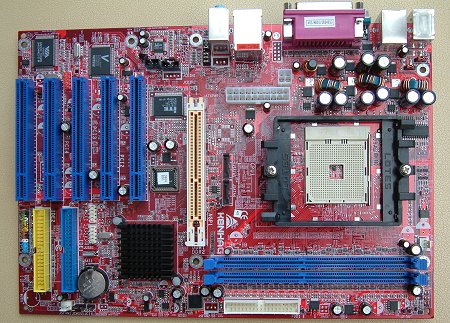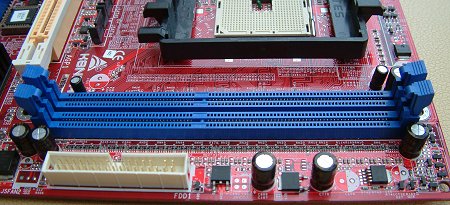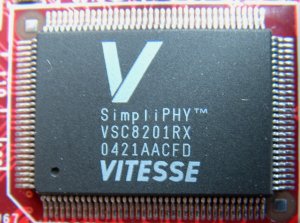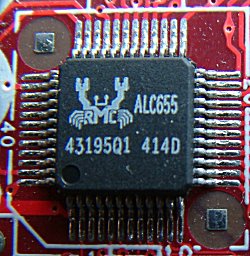Layout and features

A basic, no-frills approach is in evidence again from BIOSTAR. The K8NHA Grand looks a little odd on first inspection. That's down to the use of a narrow PCB that measures barely 20cm across; around 4cm narrower than most other ATX boards. Even with this lack of width, the board doesn't feel cramped. Component placement is good and everything is within easy reach. This 'clean' feel has been managed due to NVIDIA's single-chip design. As you can see, there's no traditional northbridge in sight.
There's also plenty of room around the CPU socket. Heatsink installation was a cinch. BIOSTAR uses a 3-phase PWM power supply for regulating voltage. Both 4-pin and 20-pin ATX power connectors are located above the socket. I'd rather they be nearer the DDR slots such that the thick wires wouldn't have the potential to disrupt the fan's airflow.

The age-old problem of having DIMM slots too near an AGP port rears its ugly head again. Install the card first and you'll have to remove it to completely access system RAM. Just having the AGP port a touch further down or the DIMM slots a couple of cms to the right would solve this niggling problem. BIOSTAR has decided to locate the floppy port rather high up on the board. I'd have preferred primary and secondary IDE ports to sit side by side. Rather, they're positioned much further down.

Cooling the single-chip design is a passive heatsink. Fanless boards is a BIOSTAR trait. Thinking about it logically, I'd prefer the secondary IDE channel (IDE2) to be located above IDE1. The cable will inevitably have further to go than the hard drive's. Pulling it around and underneath creates unnecessary clutter. A couple of white USB headers add a potential 4 USB 2.0 ports through optional bracket.
PCB space limitations take discrete RAID out of the equation. A couple of SATA ports and a secondary IDE channel, however, should be enough for most budget users' needs. 5 PCI slots should give all the expandability one needs.

Almost as large as NVIDIA's nForce3 250Gb is Vitesse's Gigabit physical layer. Its job is to route the signal emanating from NVIDIA's on-chip GBe controller through to an RJ45 socket located on the I/O section.


nForce3 250Gb still hasn't integrated FireWire of any kind. That's why VIA's VT6307 ASIC is implemented. As such, it's a single-chip 2-port controller that integrates a physical layer. 8 USB 2.0 ports, however, are present in the '250Gb.

4 of those USB 2.0 ports are available via the I/O section.









